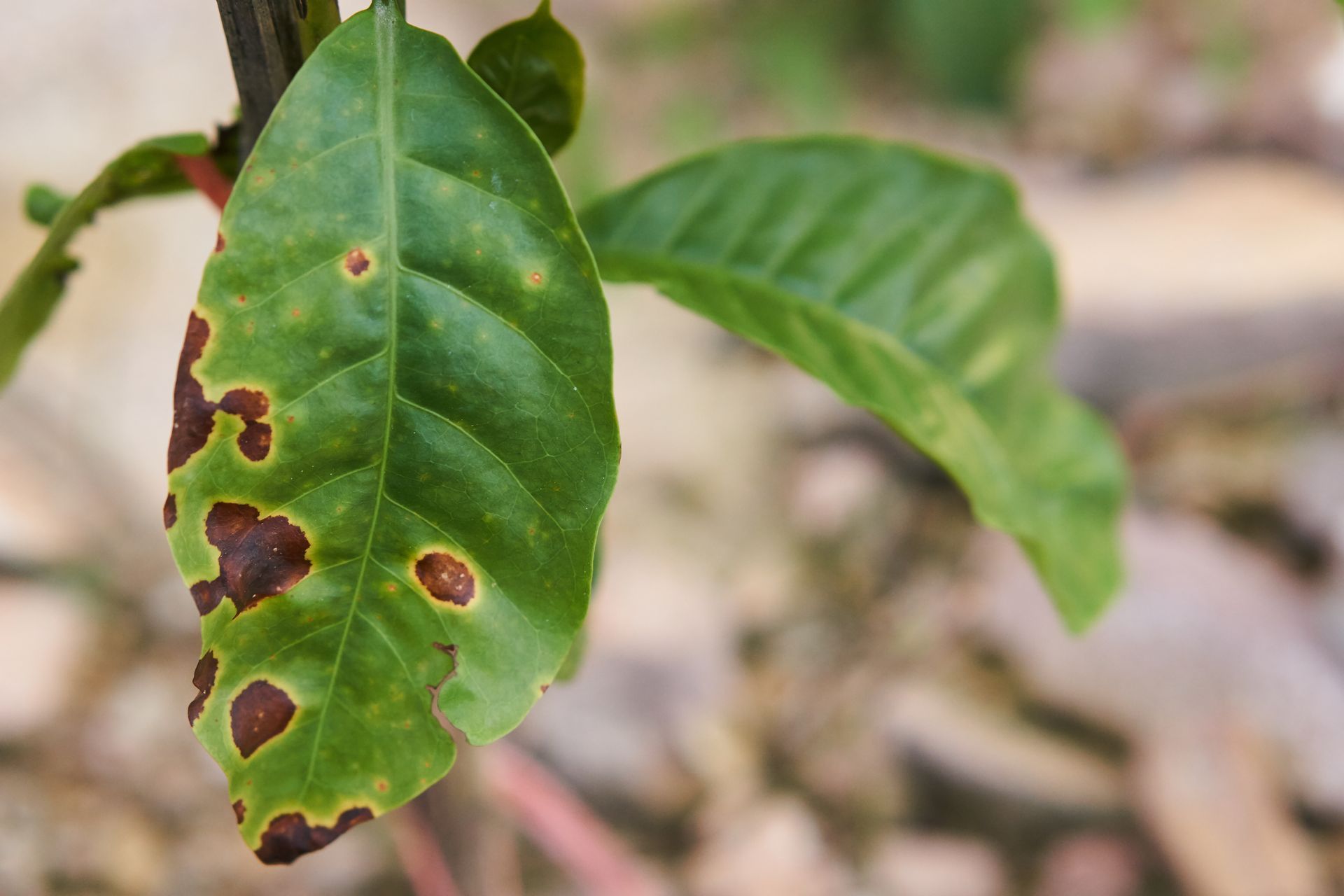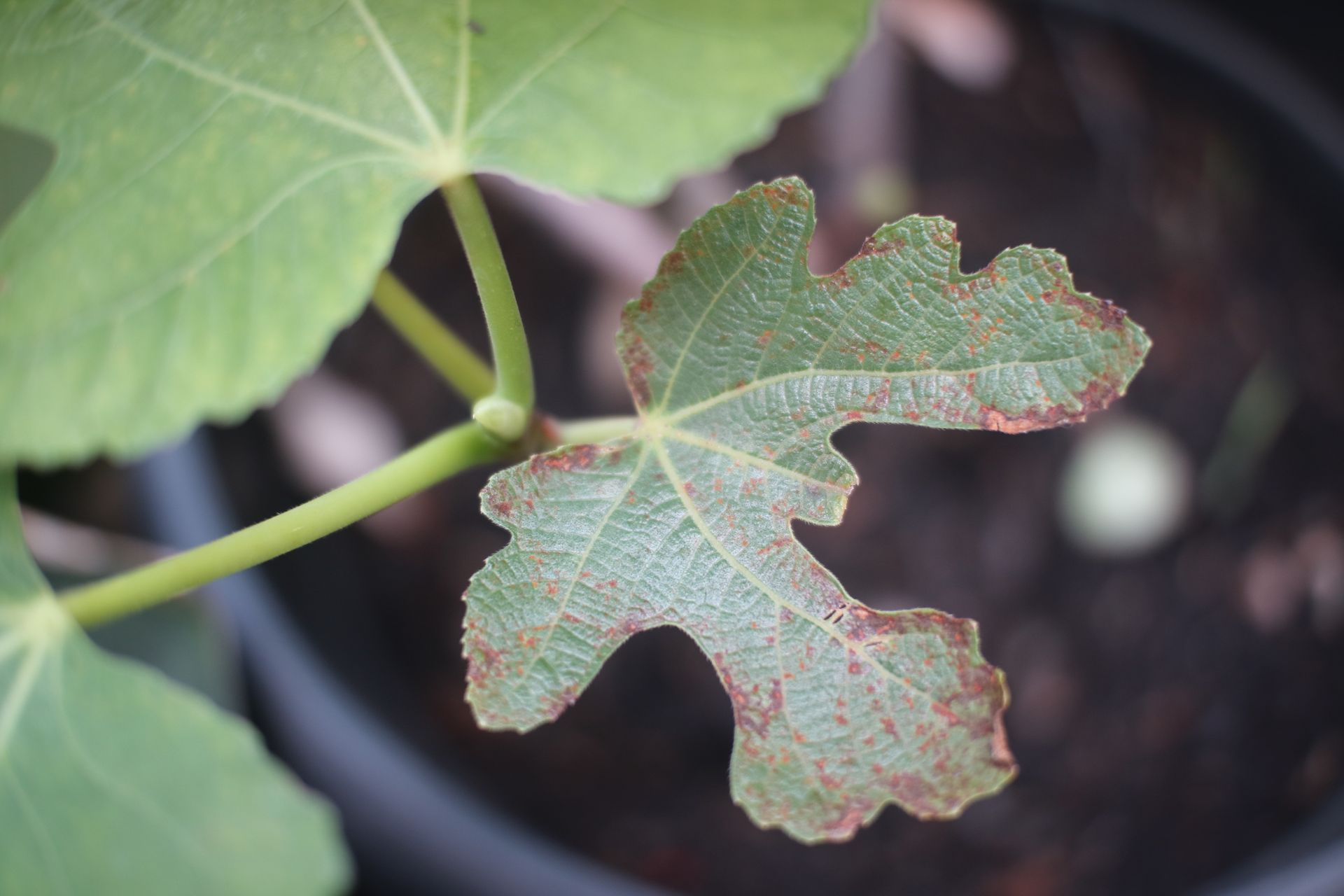Tree Rust Disease And Treatment

Tree rust disease is common in plants, especially in those that prefer humid climates. It is caused by various fungi and manifests in reddish-brown spots on leaves, twigs, and steams. It's important to be familiar with the signs and symptoms of this fungal disease to deal with it in time because rust spots on leaves can also impact the surrounding ecosystem.
Table of Contents
Prevention and management of tree rust disease involve cultural and chemical treatments. Below, we discuss everything you need to know about tree rust disease.
What Is Tree Rust Disease?
Tree rust disease is a fungal infection in trees, such as hardwoods and conifers. Fungi from the genus Cronartium and Gymnosporangium commonly cause this disease. The most common instance of this fungal infection is cedar apple rust in Eastern red cedar (Juniperus virginiana).
The spores from these fungi spread via water or wind. They infect trees through natural openings, like stomata or wounds. Once they enter the tree, they grow and spread to different parts. The speed at which these spores spread will depend on the type of fungus.
Rust fungi damage the vascular system, including the xylem and phloem. They reduce the tree's ability to transport nutrients and water. Due to this, the plant weakens and loses its ability to produce new foliage.
Symptoms
The symptoms of tree rust disease vary depending on the severity of fungal spread and the type of tree. But here are some common signs:
- Yellowing or browning of leaves
- Orange or rust-colored lesions on the branches, stems, and leaves
- Stunted growth
- Premature leaf dropping
- Misshapen leaves
- Distorted leaves
- Development of lesions and cankers on the bark
- Swelling or galls on tree leaves and stems
- Drooping branches
- Reduced seed and fruit production
Rust disease causes trees to lose their leaves, reducing tree cover in the area. It also affects the microclimate by reducing resource and habitat availability for other organisms.
In a riparian (water-related) ecosystem, the loss of trees affects water quality. It impacts the habitat of aquatic organisms, resulting in their death or reduction. The disease might also spread from infected trees to surrounding healthy plants.

Rust Spots On Leaves
Rust appears on leaves as oval or circular spots. These rust spots on leaves can have different colors based on the infection stage. But they are usually orange and red, progressing to become red-brown later.
The spots can be sunken or raised and have a rusty or powdery appearance. As the plant leaves become filled with these spots, they become distorted. With time, these spots spread from the leaves to the tree's fruit and stem.
How To Treat Rust Fungus on Trees
There are many ways to treat rust fungi on trees. We cover the main two:
- Organic Methods
- Inorganic Methods (Chemical Treatments)
Organic Methods
Organic substances like neem oil and baking soda help treat fungal plant diseases. Make a solution of 2-3 tablespoons of baking soda in 4 liters of water.
Apply this baking soda spray on the infected plants every week. You can increase the efficiency of baking soda by adding light horticultural oil.
Neem oil can also serve as an insecticide and fungicide. It prevents the penetration of fungal spores into leaves. Make a solution of 1 part neem oil to 10 parts water and spray it on the affected plants.
Dusting the plant with sulfur once a week also prevents fungal diseases. Use a sulfur spray to treat the tree's stems and leaf surfaces. Besides preventing rust diseases like powdery mildew, sulfur also kills some pests.
Chemical Treatments
There are many chemical treatments to tackle tree rust disease. But you should only use chemical treatments as a last resort. Combine these treatments with prevention methods to make them more effective.
- Fungicides: Copper and sulfur-based fungicides, such as the Bordeaux mixture, can help treat tree fungal infection. Mancozeb protects plants against fungal infections, while myclobutanil eradicates rust fungus. While these two work against all fungi, triadimefon only treats specific rusts.
- Systemic Fungicides: These fungicides are sprayed onto the tree's base. The roots absorb these chemicals and spread them to other parts through the vascular system. Some examples of these fungicides are Elite, Merivon, Flint, Indar, Rally, and Orbit.
- Foliar Fertilizers: A foliar fertilizer is a solution of nutrients like potassium and nitrogen. It can boost resistance to fungal diseases, including rust. You can make a foliar fertilizer home with compost tea, herbal tea, fish emulsion, and kelp. Comfrey tea is another effective fertilizer packed with potash.
If you're unsure which fungicide to use against rust fungi, contact your area's Cooperative Extension Service. Some municipalities also have programs for controlling tree diseases.
If you're unsure which fungicide to use against rust fungi, contact your area's Cooperative Extension Service. Some municipalities also have programs for controlling tree diseases.
Prevention
Knowing how to treat a tree with fungus is not enough. You should also take preventative measures to avoid this problem in the first place. These tips can prevent many fungal diseases, including rust fungus.
- Clear debris from the tree's base during wet weather. Leaves that are wet for 6 to 10 hours become a site for rust infection.
- Do not overspray plants with nitrogen-rich fertilizers. They encourage soft growth, like leaves and young stems. These are more susceptible to fungal diseases.
- Avoid overhead watering since wet foliage facilitates the spread of disease.
- Allow spacing between plants to improve air circulation. Rust thrives in damp and enclosed environments where it can spread from one plant to another.
- Remove weeds that might become a habitat for rust. Willow herb is a common weed that hosts fuchsia rust. Similarly, wild mallow weed harbors hollyhock rust.
- Prune diseased trees and remove the infected parts to stop the spread of the infection.
Rust Resistant Plant & Tree Varieties
Another way to keep rust fungus at bay is to plant rust-resistant plant varieties. One plant group may not be rust-resistant, but some of its subspecies and anemones may be. Here are some resistant varieties of common trees and plant varieties:
- Tomatoes: Big Daddy, Early Girl, Sungold, Summer Girl, and Yellow Pear
- Apple: Delicious, Enterprise, Golden Supreme, Liberty, McIntosh, and Priscilla
- Wheat: Vijay, Tilottama, Banganga, Munal, and Chyakhura
- Beans: Kentucky Wonder Rust Resistant Pole Beans
- Squash: Jaguar, Dividend, and ACX34
Plants develop rust resistance through induced resistance, genetic variation, or natural selection. Some plants may have specific genes that encode proteins to prevent fungal diseases. Others may develop specific biochemical responses to the rust fungus.
When rust spores fall on these plants, these proteins activate and trigger a defense response. The plant produces phytoalexins or other fungus-killing chemicals in response to this trigger.
Some plants also have physical barriers to prevent rust fungus. A common example is a thick and waxy cuticle, which makes it difficult for spores to enter the plant.
Hypersensitive response (HR) is another mechanism plants use to limit rust spread. Upon fungal entry, the plant starts localized programmed cell death at the infection site. It blocks the nutrient access for the fungus, preventing it from spreading any further.
Sweet New Earth's Final Word
Tree diseases and pests are just another part of life we must learn to live with. With the right tools and knowledge, we can effectively prevent our trees from any egregious harm.
FAQs

Christina Hernandez
Christina has done most of her research on environmental science but recently has changed her focus towards sustainable forestry. She has a passion for the outdoors and wants to spread that passion to the world.
Join our community!
Join to receive guides, insights, and the latest gardening deals!
